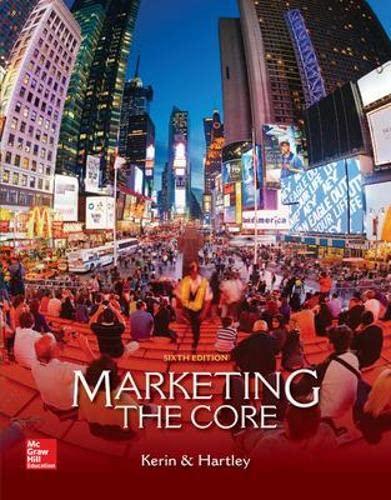The secret is we are on our seventh generation of fulfillment centers and we have gotten better
Question:
“The secret is we are on our seventh generation of fulfillment centers and we have gotten better every time,”
explains Jeff Bezos, CEO of Amazon.
com, Inc. The global online retailer is a pioneer of fast, convenient, low-cost shopping that has attracted millions of consumers. Of course, while Amazon has changed the way many people shop, the company still faces the traditional and daunting task of creating a seamless flow of deliveries to its customers—
often millions of times each day.
THE COMPANY Bezos started Amazon.com with a simple idea: use the Internet to transform book buying into the fastest, easiest,
and most enjoyable shopping experience possible. The company was incorporated in 1994 and launched its website in July 1995. At the forefront of a huge growth of dotcom businesses, Amazon pursued a get-big-fast business strategy. Sales grew rapidly and Amazon began adding products and services other than books. In fact, Amazon soon set its goal on being “Earth’s most customer-centric company, where customers can find and discover virtually anything they might want to buy online.”
Today Amazon.com continues to grow by providing low prices, vast selection, and convenience. Its selection of products covers a broad range of categories including:
Books; Movies, Music & Games; Electronics & Computers;
Home, Garden & Tools; Beauty, Health & Grocery;
Toys; Clothing, Shoes & Jewelry; Sports & Outdoors; and Automotive & Industrial. In addition, Amazon offers digital music, an appstore for Android, Amazon Cloud Drive,
Kindle e-readers, Kindle Fire tablets, Amazon Fire TV, and the Amazon Fire phone. Other services allow customers to:
● Search for a product or brand using all or part of its name.
● Place orders with one click using the “Buy Now with 1-Click” button on the website, and the “Mobile 1-Click” button for phones.
● Receive personalized recommendations based on past purchases through opt-in e-mails.
These products and services have attracted millions of people around the globe. Further, the company’s growth has made Amazon.com, along with its international sites in Australia, Brazil, Canada, China, France, Germany, India,
Italy, Japan, Mexico, Spain, and the United Kingdom,
the world’s largest online retailer.
Amazon’s e-commerce platform is also used by more than two million small businesses, retail brands, and individual sellers. For example, programs such as Selling on Amazon, Fulfillment by Amazon, Amazon Webstore, and Checkout by Amazon allow small businesses to use Amazon’s e-commerce platform to facilitate sales. Online retailers store their products at Amazon’s fulfillment centers and when they sell a product, Amazon ships it! Amazon.com also operates retail websites for brands such as bebe,
Marks & Spencer, Lacoste, and AOL’s Shop@AOL. Individual sellers use the Amazon network to reach millions of potential customers. These business partnerships all contribute to Amazon’s sales, which now exceed $75 billion.
Bezos defines Amazon by its “big ideas, which are customer centricity, putting the customer at the center of everything we do, and invention—we like to pioneer, we like to explore.” Amazon’s success is also the result of an intense focus on cost and efficiency that leads to lower prices. More specifically, Amazon is exceptional at managing the elements of its supply chain, which make up one of the most complex and expensive aspects of the company’s business.
Questions
1 How do Amazon.com’s logistics and supply chain management activities help the company create value for its customers?
2 What systems did Amazon develop to improve the flow of products from suppliers to Amazon fulfillment centers? What systems improved the flow of orders from the fulfillment centers to customers?
3 Why will logistics and supply chain management playan important role in the future success of Amazon.com?
Step by Step Answer:






